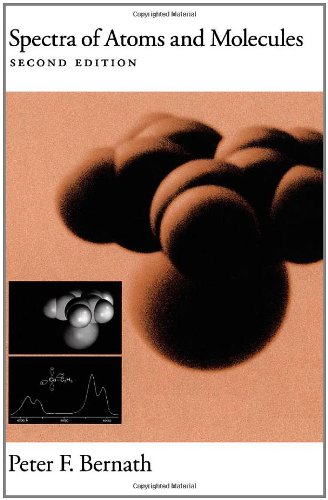Spectra of Atoms and Molecules download
Par martin christy le dimanche, décembre 18 2016, 01:22 - Lien permanent
Spectra of Atoms and Molecules by Peter F. Bernath


Spectra of Atoms and Molecules Peter F. Bernath ebook
Page: 405
ISBN: 0195075986, 9780195075984
Publisher: Oxford University Press
Format: pdf
All molecules and atoms absorb, as well as emit, light at varying wavelengths. Spectroscopy is the study of matter and how electromagnetic radiation interacts with it. The four-atom molecule of formaldehyde, the gas phase spectrum of which is shown below, provides an example of these terms. A sample mixture of excited and ionized hydrogen gas containing both atoms and molecules would make the emission spectrum more complex. Stark effect, the splitting of spectral lines observed when the radiating atoms, ions, or molecules are subjected to a strong electric field. UV spectroscopy is used in the study of atoms, ions, molecules, and solids to identify their energy levels, transition probabilities, and other characteristics. Laser-cooled atomic vapors have enabled research at the frontiers of physics for more than three decades, with a profound impact on precision spectroscopy, atomic clocks, and the study of Bose-Einstein condensates. The Basics of Spectroscopy in Astronomy. Molecules are made up of many different atoms, and those atoms crowd close to each other in ways that make one atom interfere with the normal spectrum of another. The sample of hydrogen that scientists use to obtain these spectra is very pure. We expect six fundamental vibrations (12 minus 6), and these have been assigned to the spectrum absorptions.